This river has been flowing quietly for thousands of years, spanning the north and the south and fostering the peerless Great Canal culture. A myriad of richly endowed towns emerged on her way. Among them is a centuries-old ancient town, the name of which sounds poetic and reads refreshing—It is the ancient town of Yangliuqing. Ming-Dynasty poet Yu Shenxing once dedicated a poem to this town: "Green willows shroud the post house, on the boat hang xiongqiong seedlings; amid the setting moon travels afar the sound of the flute, across the sky looms a wisp of cloud." The quietly flowing Grand Canal not only made Yangliuqing a hub of water transport to the capital in feudal times, but also created an extraordinary folk culture. New Year pictures are a part and parcel of this culture.
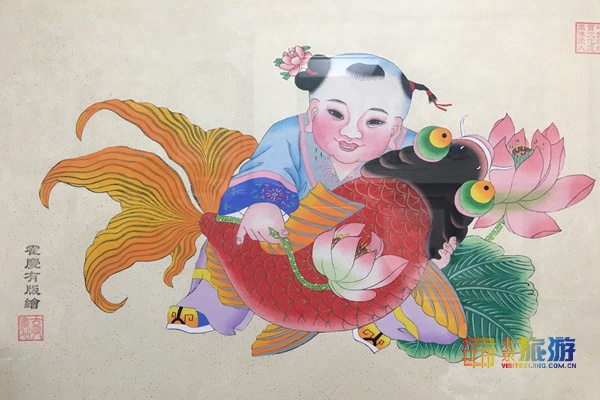
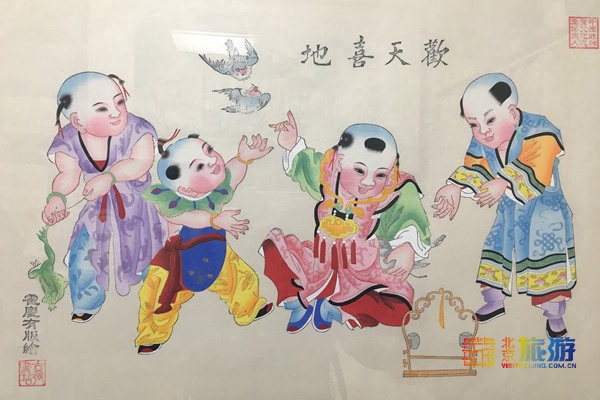
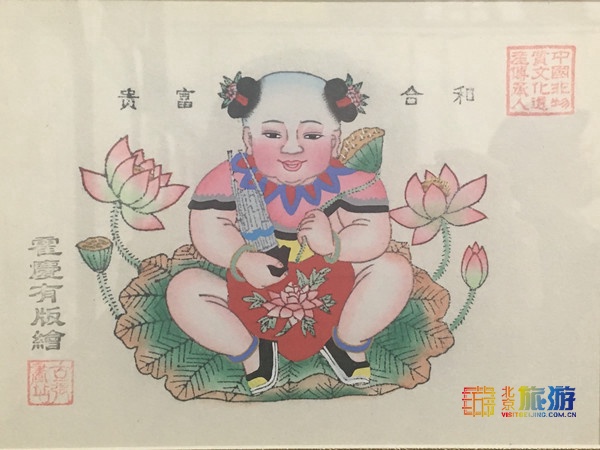
Yangliuqing Wood Block New Year pictures originated in the Ming Dynasty and flourished during the Yongzheng period of the Qing Dynasty. Historically, most of the households in the town of Yangliuqing and the nearby villages in Tianjin were engaged in workshop production of New Year pictures. "Every household knows how to add details to a painting, and everyone is adept at painting," so the New Year pictures made here were named after their place of production—Yangliuqing. For historical reasons, Yangliuqing New Year pictures went into decline in later times. Fortunately, later generations did not give up on this craft. Today, Yangliuqing wood block New Year pictures have been inscribed on the National Intangible Cultural Heritage List, and are, together with Suzhou's Taohuawu New Year pictures, called "Peach in the South and Willow in the North."
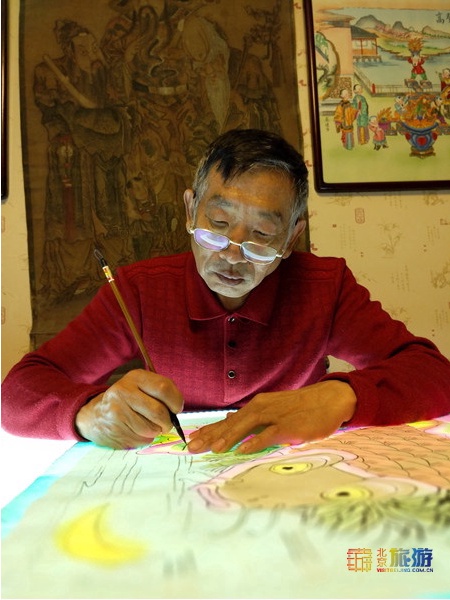
The name Huo Qingyou comes immediately to mind when it comes to Yangliuqing New Year pictures. Huo Qingyou, known as Gu Yizhang in art circles, is a national representative inheritor, a UNESCO master of folk arts and crafts, and the Huo family's sixth-generation inheritor of Yangliuqing New Year pictures. Huo Qingyou's love for New Year pictures was due to the family influence. He began to learn colored drawing from his father Huo Yutang at the age of 6. At 10, he learned delineating and printing; at 12, he learned block cutting; at 16, he learned picture mounting. Huo Qingyou is currently the only New Year picture artist in Tianjin who has all the skills ranging from delineating to engraving, printing, painting, and mounting. He is especially good at producing draft pictures and block cutting. The wood block pictures he makes are characterized by smooth, delicate, clear, and steady lines. They are an excellent example of the block cutting techniques employed in the production of Yangliuqing wood block New Year pictures. To publicize and carry forward Yangliuqing wood block New Year pictures, he expanded his residence, making it the only family workshop-based museum of New Year pictures in Tianjin.
Collections of the Museum of New Year Pictures
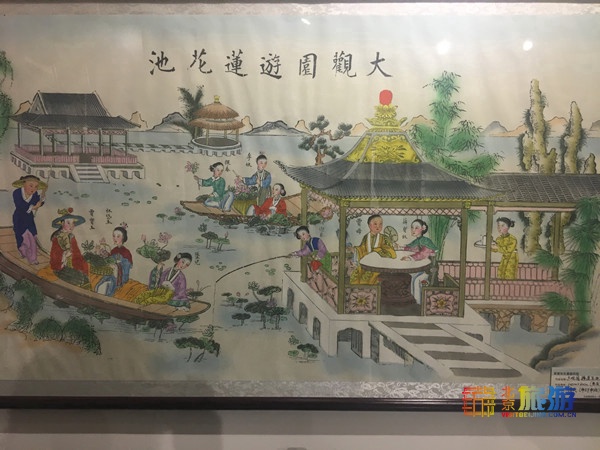
This museum of New Year pictures houses the sample wood blocks and materials related to New Year pictures that Huo Qingyou gathered from various places. To get these valuable stuff, he traveled to every corner of Yangliuqing and of the counties on the outskirts of Tianjin; his footprints can also be found in some areas of the country. The first floor of the museum is used for showcasing the making of New Year pictures; visitors can watch how New Year pictures are made here. The second floor is used for displaying modern New Year pictures. The third floor is used for storing the New Year pictures he collected over the years and those handed down from the past, which range from Qing-Dynasty works to present-day works. Some of the tools used to make New Year pictures in the past are also well preserved here to promote Yangliuqing New Year pictures.
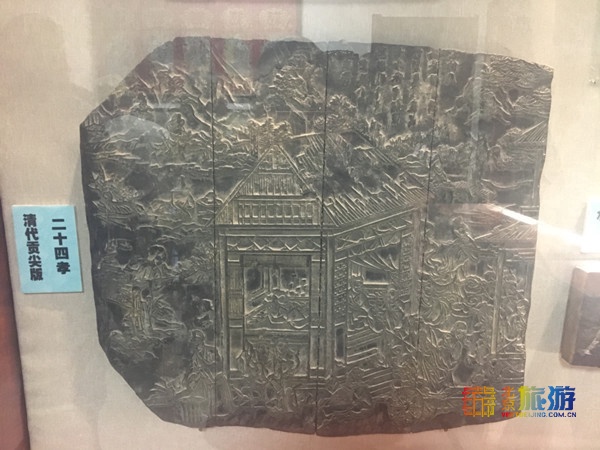

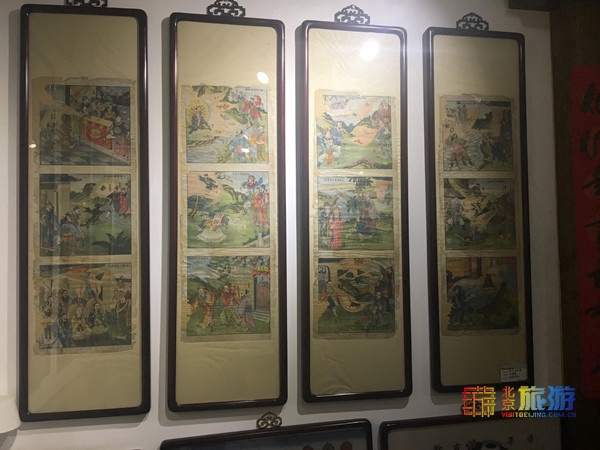

Yangliuqing New Year pictures involve five steps: delineating, engraving, printing, painting, and mounting. The first step is to draw up the draft with smooth lines; the second step, also a very key step, is to cut blocks on birch-leaf pear wood to the mother set using lifelike lines; the third step is to "print," that is, to apply ink and paints to the template using a force that suits the use of the brush, the shade of the ink and change in rhythm, and then overprint the wood blocks one by one on rice paper or drawing silk; the fourth step, also a time-consuming step, is to "paint," that is, the painter makes a colored painting by hand—it is a test of the painter's skills and patience. The final step is mounting.
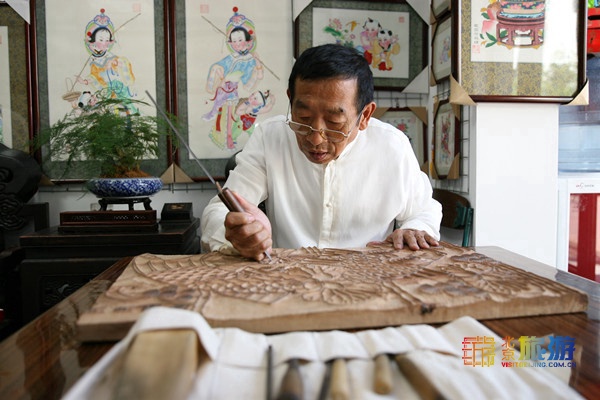
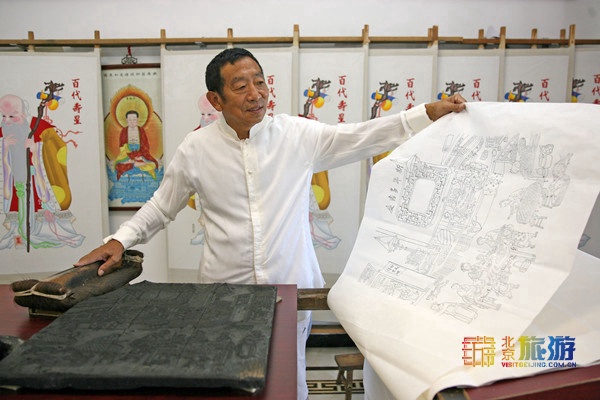
According to Huo Shulin, the son of Huo Qingyou, it may take a lifetime to learn a single process. There used to be families specialized in these steps, such as the delineating family and the engraving family. These families are long gone, and they do all the things necessary for the making of New Year pictures. It takes an intelligent apprentice at least one and a half years to switch from auxiliary work to essential work. As to quality, it is another issue for "can do" does not of necessity ensure quality. If an apprentice remains unskillful despite a three-year-long learning process, the master will normally ask him to quit and secure another source of livelihood.
The New Year pictures on the market are sold as gifts at a low price, while those made by Huo Qingyou and his family are sold as collectibles at a profitable price. When they see legacy articles like New Year pictures, many overseas Chinese would say in surprise, "This is something I used to have when I was a child!" As Chinese culture continues to spread, foreigners begin to show an interest in New Year pictures. However, their favorite are New Year pictures portraying the Door God and Zhong Kui, not those featuring children. Koreans prefer lotus-themed New Year pictures, for they believe in Buddhism and feel that lotus stands for purity. Japanese, on the contrary, believe lotus is associated with death. Huo Shulin said that as Yangliuqing New Year pictures go global, cultural differences call for re-creations aimed at fitting into the target culture and customs.

When talking about inheritance and development, Huo Shulin said, "On the one hand, we constantly innovate; on the other hand, we work to discover and revive legacy crafts. New Year pictures are seldom seen in China now. One must go to the Winter Palace in Russia to catch a glimpse of them. Some of the New Year pictures housed in the Winter Palace are new even to my father. New Year pictures come with tens of thousands of themes, and we have seen only 1,000 to 2,000 of them. A businessman once showed us the New Year pictures in the Winter Palace. The styles of the pictures, the scenes depicted in them and the characters portrayed were unprecedented to us. They are obviously the sensational works of an influential maker of New Year pictures. We hope to bring the themes of traditional New Year pictures back to life so young people can better understand New Year pictures without going abroad. We also hope to see the minerals and plant pigments used in Yangliuqing New Year pictures in the Ming and Qing Dynasties again. The color of these natural pigments can last well over one hundred years. The pigments we use today are all chemical products. Without natural pigments, Yangliuqing New Year pictures would not be able to retain the flavor they are known for. These are what our generation are expected to do. It takes a lot of effort, but it is worth it!"



